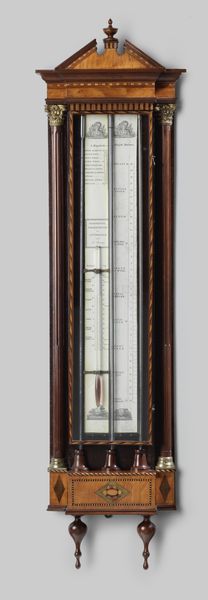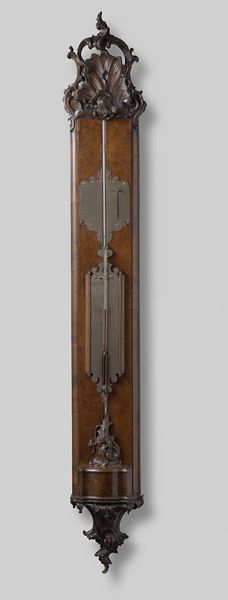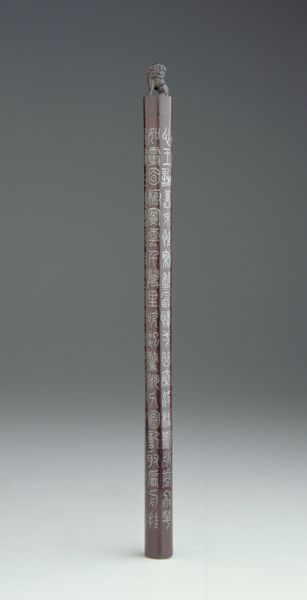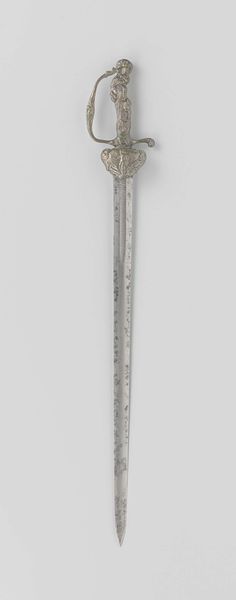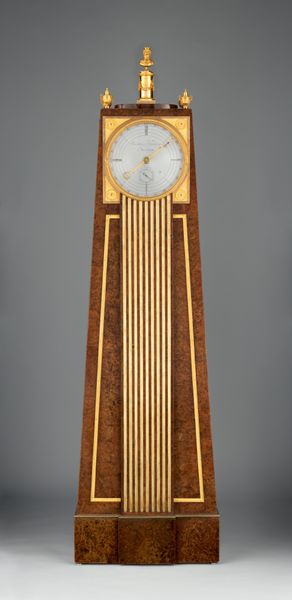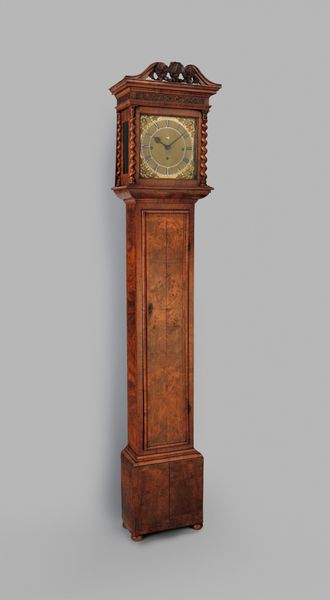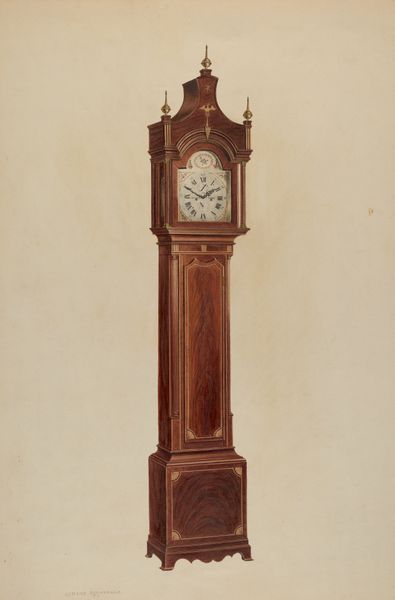
Dimensions: height 9 cm, diameter 4 cm
Copyright: Rijks Museum: Open Domain
Curator: This exquisite object is listed as "Two components belonging to a barometer" crafted around 1790. It appears to be made primarily of wood. What are your initial thoughts? Editor: The composition feels very linear, vertical, and balanced, even with the intricate baroque flourishes. It's visually arresting; the scale, though hard to gauge, seems imposing. I’m drawn to the textures—the smooth glass of the barometer itself set against the intricately carved wood. Curator: Indeed. It represents a fascinating confluence of science and craft. Consider the socio-economic context: the production of scientific instruments like this wasn't simply about function; it was also about display and status. Who was commissioning such an elaborate object, and what skilled labor went into its creation? The materials alone speak to networks of trade and access. Editor: And how skillfully those materials are manipulated. The artisan's understanding of form and line is exceptional, as we can notice from the gilded decorations on top and bottom of the wood framework that seem to offer some playful contrast with the severe straight lines of the measuring device. The eye is drawn upward along this delicate calibration. I’m captivated by the play of light across those surfaces, a conscious decision, surely, in its design. Curator: Precisely. And that design would have been informed by scientific understanding, current technological possibilities, as well as the aesthetic values held by the maker, owner and culture. Understanding who crafted it, where the materials originated, and the intended function tells us a great deal about the social fabric of the late 18th century. This wasn’t simply about telling the weather; it was about positioning oneself within a network of knowledge and power. Editor: Perhaps. I lean more towards seeing how its lines pull the viewers' eye towards its top ornaments; a demonstration of visual mastery through balance and symmetry. It embodies artistic intention to direct our focus, creating a visually satisfying and informative structure, don’t you agree? Curator: Certainly, but let's also acknowledge that "satisfying structure" would only appeal to a wealthy owner. Such instruments were tools of prestige and power. I also find it fascinating that it presents both art and scientific instruments that were so heavily tied into trading activity. Editor: I’ll concede the social component—such adornment certainly denoted status. Overall, though, a marvel of design, of course. Curator: Yes, an object that brings so many historical elements in a striking harmony!
Comments
No comments
Be the first to comment and join the conversation on the ultimate creative platform.
